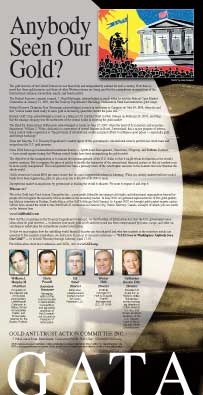August 1, 2005
One of the most important issues in today's world entails a very exasperating fallacy being implanted into the American mind in order to justify the massive centralization of modern government. It is the leftist academic community's warping of the political spectrum so as to smear the concept of a free, capitalist society.
The idea of a political spectrum, is one of the first concepts taught and analyzed in poly-sci and economics courses in college. It is a listing of the world's various political-economic systems on a chart, placing each system on the chart toward the left, middle or right, according to the basic type of government that system upholds. It is a natural way to provide the overall perspective needed in judging the different political and economic forms that exist, and thus a very important tool in teaching what the political world is all about.
To understand why the political spectrum that is taught today is so perniciously false, we must first delve into a bit of Aristotelian philosophy. The notion of a political spectrum with three poles of left, right and center has come to us as a legacy from Aristotle's idea that virtue consists of the "rational course" that lies between two opposite and natural extremes. This rational course he called the Golden Mean. For example:

As Aristotle tells us in his Nicomachean Ethics, if a man is confronted with danger, he meets it in one of three ways. He succumbs to the extreme of cowardice, or to the opposite extreme of rashness; or he chooses the middle course of courage, which is contrary to both. In like fashion, a man can choose liberality, which is midway between the opposite extremes of stinginess and extravagance. He can choose self-control between the extremes of abstemiousness and drunkenness, and he can choose ambition between sloth and greed. [1]
Aristotle's theory was based upon the fact that in most human action, there is a wide range of intensity, all the way from too little (defect), to too much (excess). In between such defect and excess, there lies an appropriate mean which would be virtue, with the two opposites of defect and excess being vices. In other words, good is the wisdom of balance, and evil is when you stray away from the Golden Mean toward one of the two extremes.
There are, of course, many values of life (other than the ones Aristotle put forth) that can also be placed upon a spectrum to determine a Golden Mean. Human life entails a wide array of desires, actions, traits, conditions and needs, numerous of which can be portrayed in terms of a vice-virtue-vice relationship. Listed below are a few examples that I have put together:

You see here the basic triad that Aristotle defined -- vice, virtue, vice. Midway between the defect of apathy and the excess of zealotry, there lies the rational balance of concern. Between vulgarity and prudery, there is the mean of decency. Between chaos and regimentation, there is order. And the same thing with all the other triads of value listed here.
What is so beautiful about Aristotle's doctrine is that it shows all the noblest and most desired values of our existence to be means -- such as loyalty, faith, love, peace, order, and freedom. All the things we value most in life are "means" between two opposite vices. This is the way reality is constructed. Almost always there is a mean between two evils.
Read the Rest of Article

![[Most Recent Quotes from www.kitco.com]](http://www.kitconet.com/charts/metals/gold/t24_au_en_usoz_2.gif)






No comments:
Post a Comment